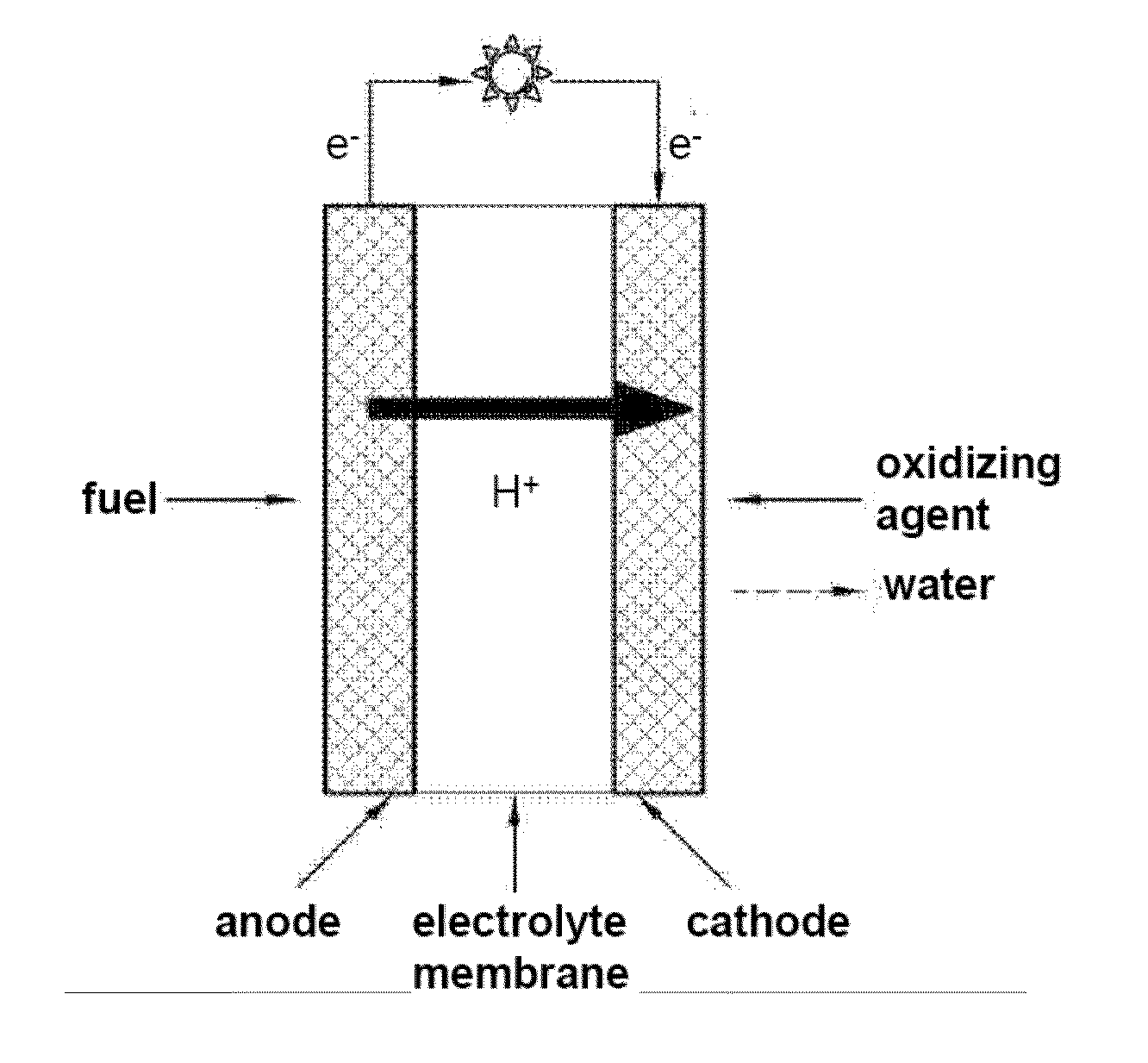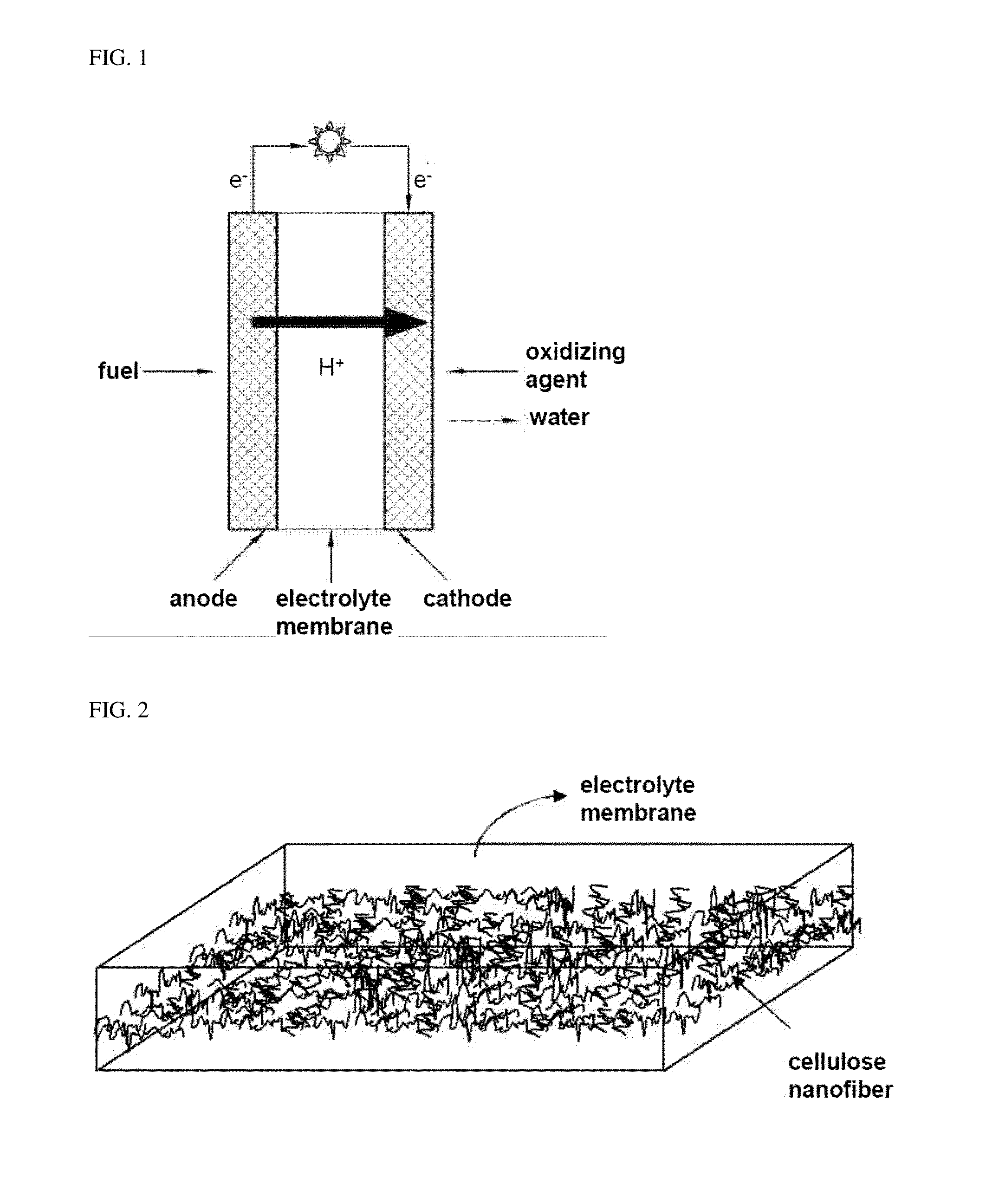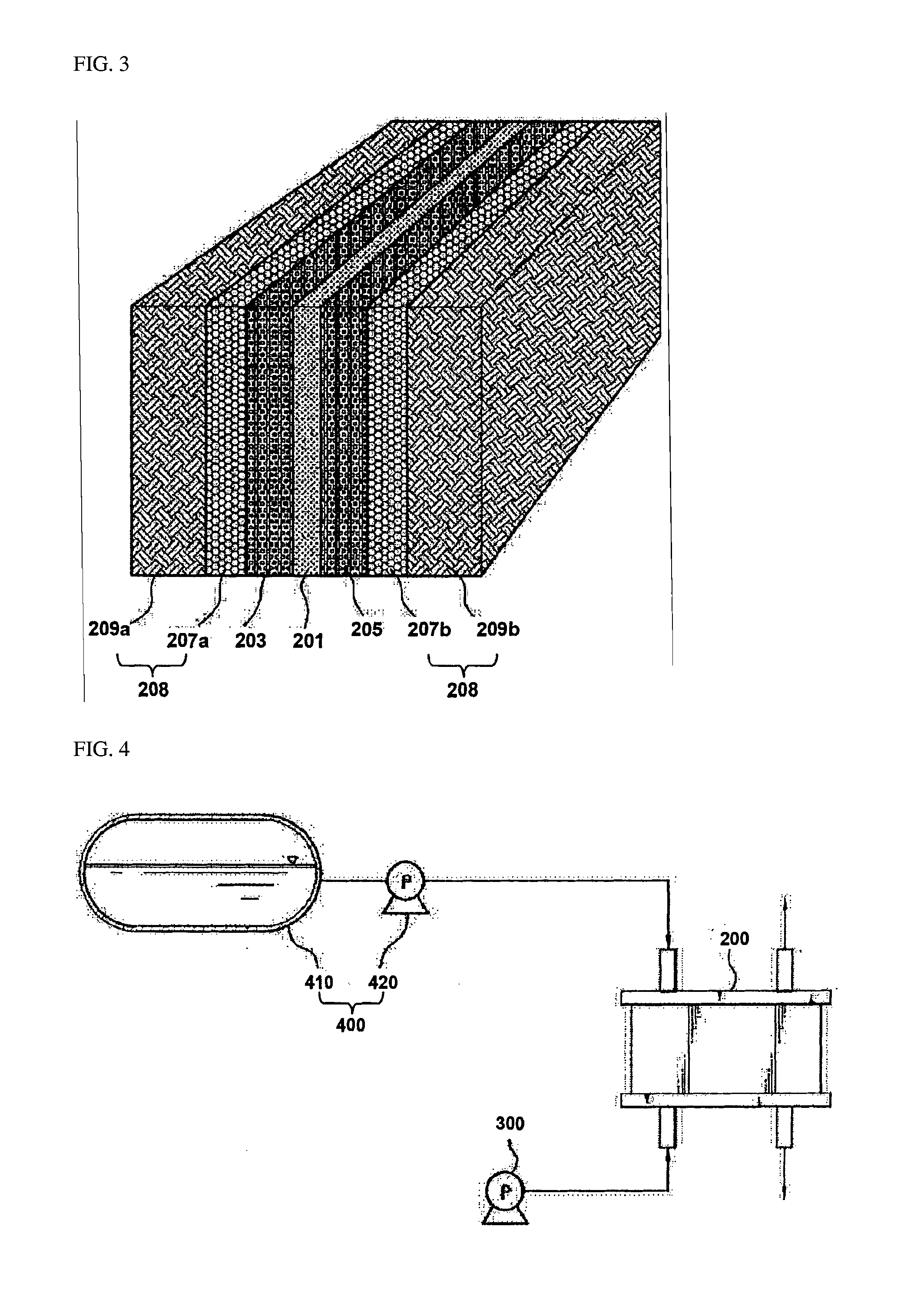Polymer electrolyte membrane for fuel cell, membrane electrode assembly and fuel cell including the same
a technology of electrolyte membrane and fuel cell, which is applied in the direction of electrolytes, cell components, electrochemical generators, etc., can solve the problems of increasing the manufacturing cost of fuel cells, deteriorating the durability of fuel cells, and difficulty in ensuring mechanical resistance during actual operation of fuel cells
- Summary
- Abstract
- Description
- Claims
- Application Information
AI Technical Summary
Benefits of technology
Problems solved by technology
Method used
Image
Examples
example 2
[0058]A polymer electrolyte membrane, a membrane electrode assembly and a fuel cell were manufactured in the same manner as in Example 1 except that 99 parts by weight of sulfonated polyether ether ketone was used and 1 part by weight of ethyl cellulose nanofibers were used.
example 3
[0059]A polymer electrolyte membrane, a membrane electrode assembly and a fuel cell were manufactured in the same manner as in Example 1 except that 97 parts by weight of sulfonated polyether ether ketone was used and 3 parts by weight of ethyl cellulose nanofibers were used.
example 4
[0060]A polymer electrolyte membrane, a membrane electrode assembly and a fuel cell were manufactured in the same manner as in Example 1 except that 95 parts by weight of sulfonated polyether ether ketone was used and 5 parts by weight of ethyl cellulose nanofibers were used.
PUM
| Property | Measurement | Unit |
|---|---|---|
| Length | aaaaa | aaaaa |
| Length | aaaaa | aaaaa |
| Fraction | aaaaa | aaaaa |
Abstract
Description
Claims
Application Information
 Login to View More
Login to View More - R&D
- Intellectual Property
- Life Sciences
- Materials
- Tech Scout
- Unparalleled Data Quality
- Higher Quality Content
- 60% Fewer Hallucinations
Browse by: Latest US Patents, China's latest patents, Technical Efficacy Thesaurus, Application Domain, Technology Topic, Popular Technical Reports.
© 2025 PatSnap. All rights reserved.Legal|Privacy policy|Modern Slavery Act Transparency Statement|Sitemap|About US| Contact US: help@patsnap.com



